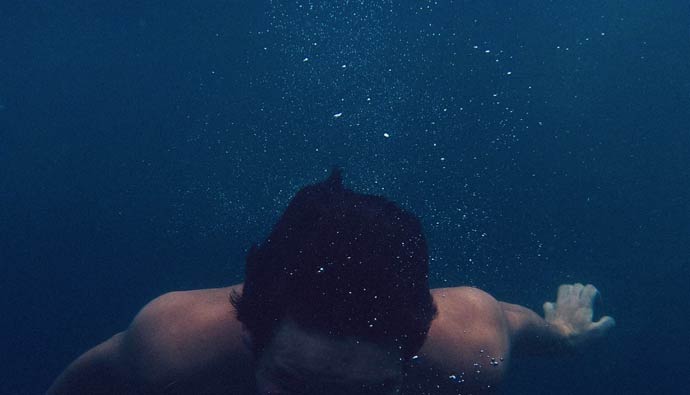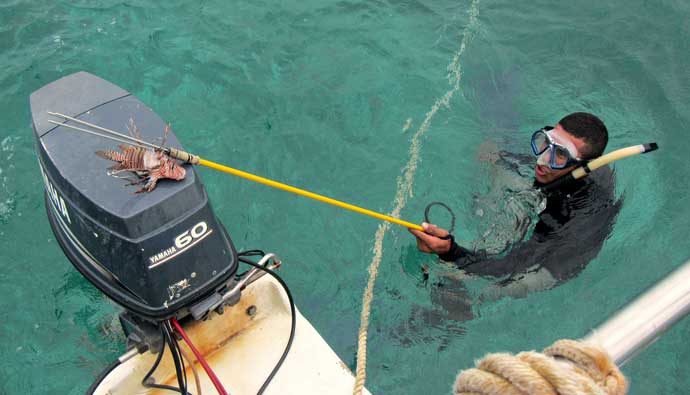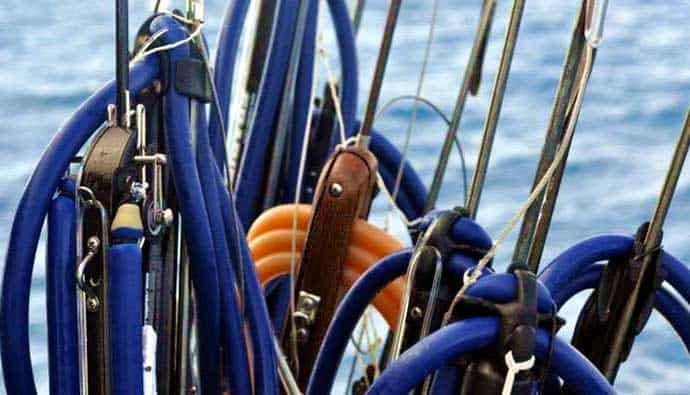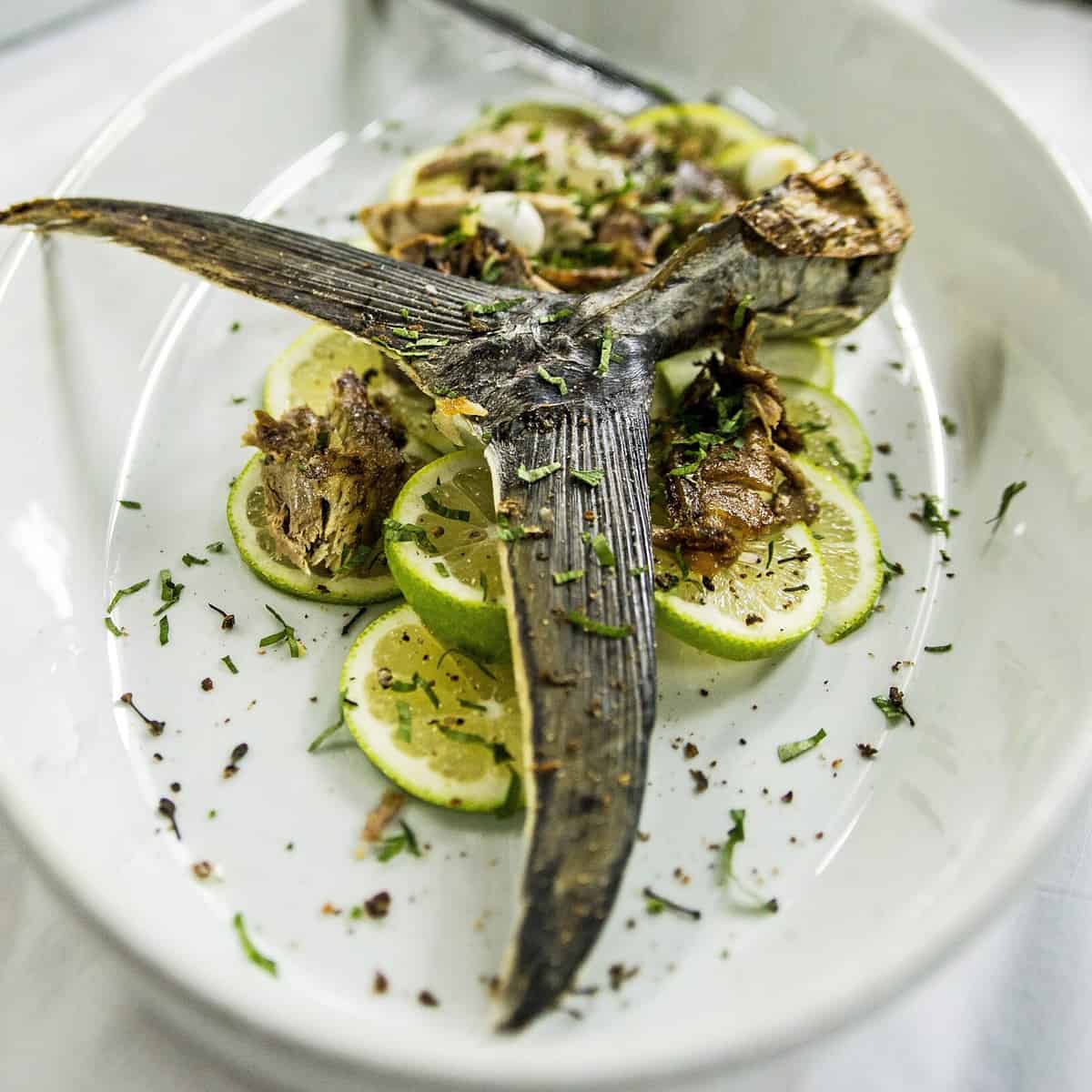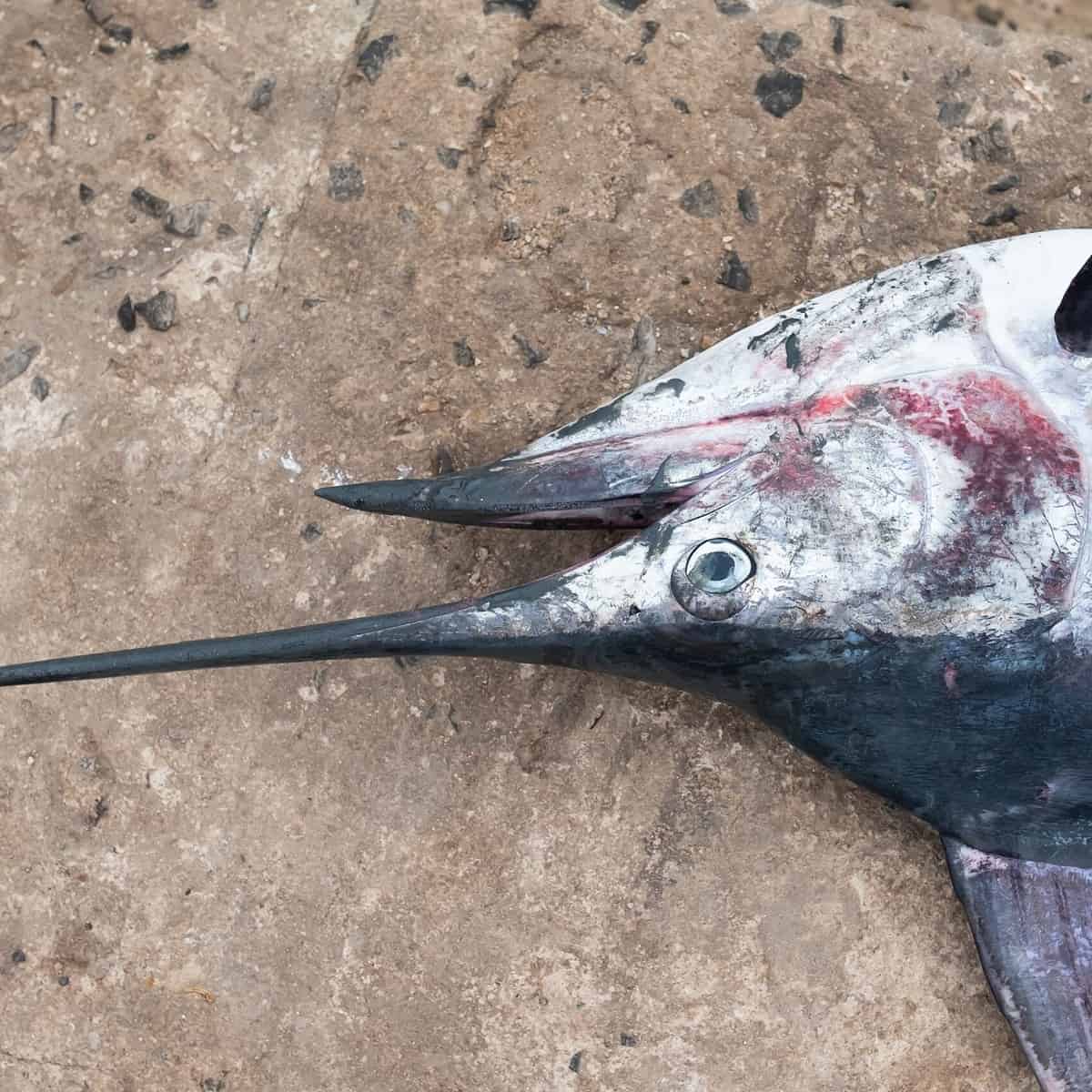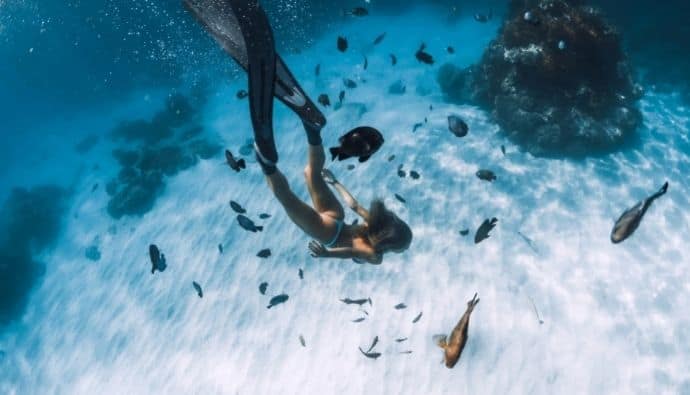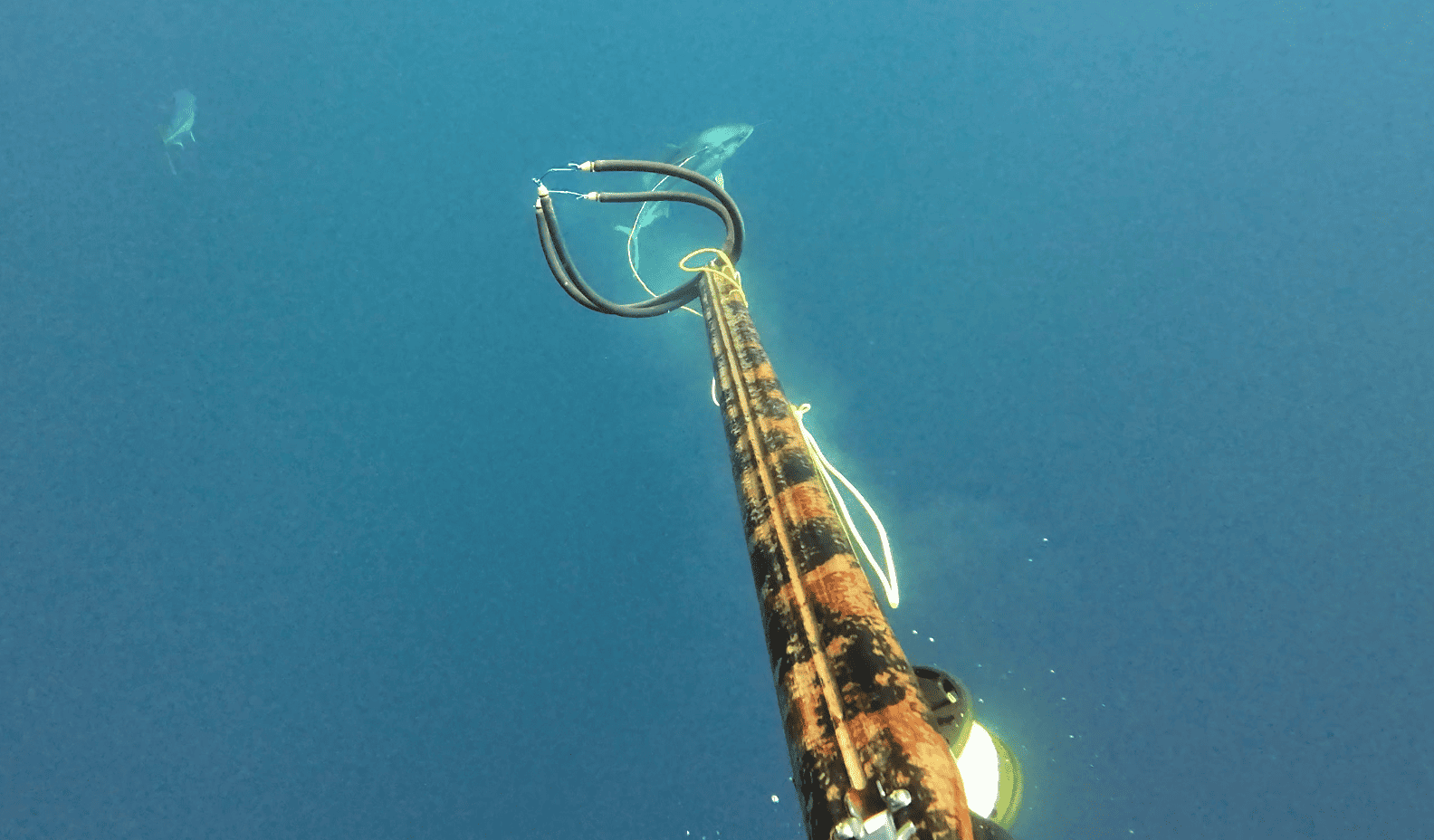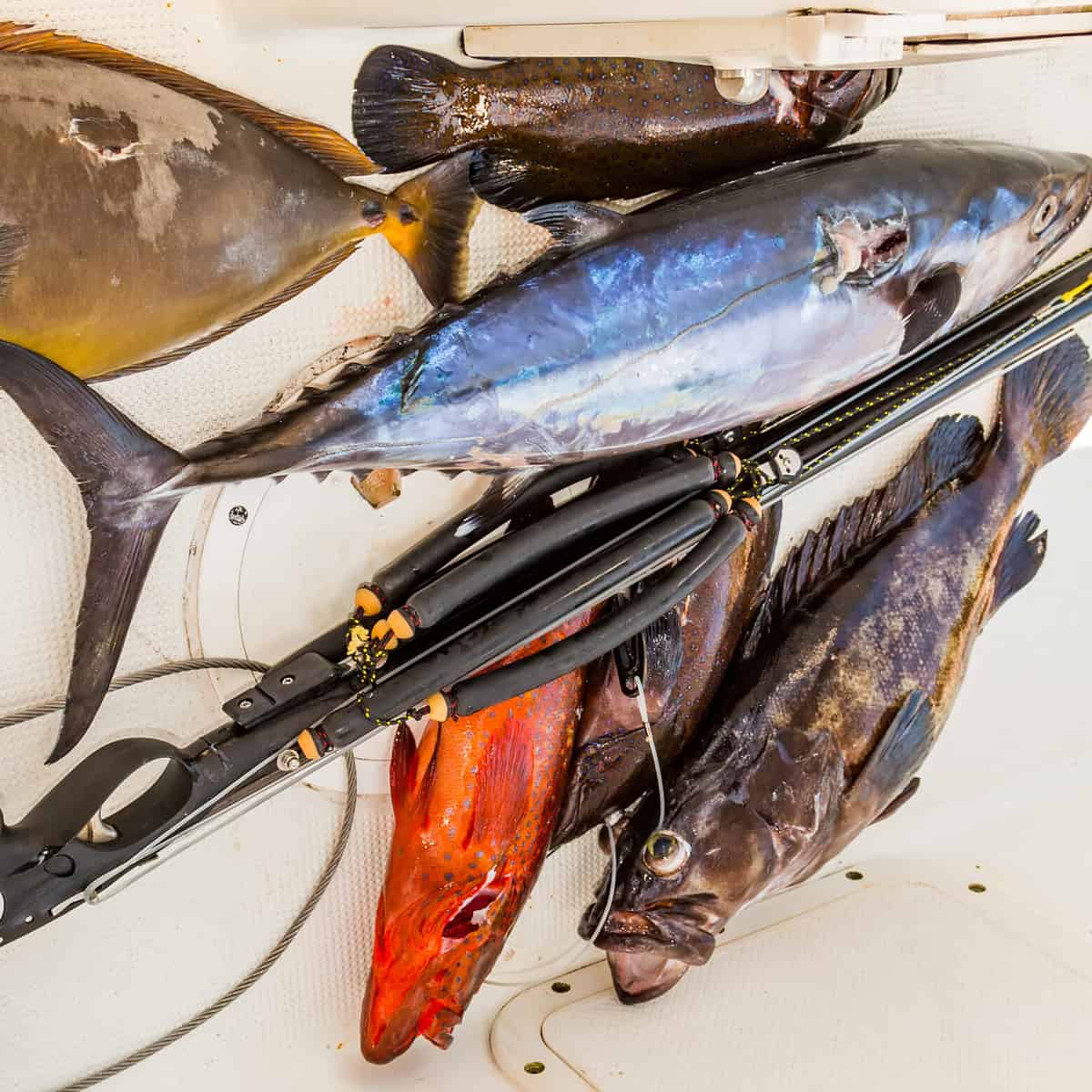Spearfishing floats are a key piece of spearfishing gear. They are useful as a visual marker, resting device, and most importantly…
Putting the brakes on big fish.
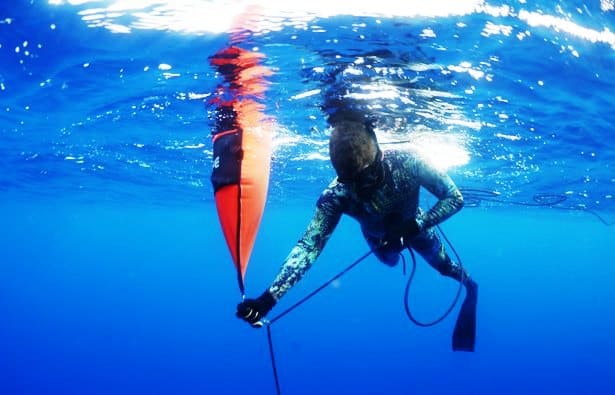
Here’s our spearfishing floats 101 guide for helping you determine if you should go float or reel.
What Are Spearfishing Floats
Spearfishing floats are inflatable or rigid floating devices that you attach to a float line and, ultimately, to your speargun.
There are many different types of floats:
- High-pressure floats
- Standard inflatable floats
- Rigid floats
- Kelp carrots
Depending on your situation, you should use different setups. For example, if you’re swimming through kelp for white sea bass, then a kelp carrot and a long enough float line would suffice.
If you’re going for tuna, then you might need a few high-pressure floats to put the brakes on the fish.
Types of Spearfishing Floats
Inflatable Float
Inflatable floats are light and easy to carry. If you’re concerned about portability, consider inflatables. These are great for shore diving and traveling, as you can inflate and deflate them as you like. Make sure to choose one that’s not made from vinyl, as it can easily pop or get holes in them.
Hard Float
Hard floats boost durability, but they can be heavy and harder to pull through the water. In comparison to inflatables, these can’t pop or get holes in them.
High-Pressure Blue Water Float
When hunting big game fish, these blue water floats can come in handy. The high pressure prevents your target fish from taking your float underwater and losing it.
Why You Need Spearfishing Floats
Safety
Spearfishing is an activity that doesn’t really give you much convenience to communicate in case something unplanned happens underwater. Having a spearfishing float allows you to hunt better and safer compared to having none.
The float can serve as your point of rendezvous in case you or other divers in your group get separated. Floats come at an advantage when it comes to visibility compared to diving suits.
Having a spearfishing dive float and flag allows other boaters in your dive spot to know that you are down in that ocean area. It also makes it easier for search and rescue to know your location should you need their help.
Convenience
When hunting underwater, you can’t necessarily place your spearfishing gear anywhere else other than tying it to your dive float with a float line. You need to get some air on the surface while you let the fish take off with your line.
This prevents losing your speargun after you’ve speared a fish. You can easily find your gun by pulling in the float lines. Aside from spearguns, you can tie on other gears to it for your convenience.
Rest
You can get tired and frustrated when hunting for hard-to-catch fish underwater. You can use your spearfishing float as a rest area and hold onto it all you like when you get too tired.
Fish Holder
Tying your dive stringer onto your spearfishing float will keep you away from harm when fishing in tropical waters or in areas where sharks are known to pass by.
One or two sharks may find and target your speared fish as their prey, and you want to keep yourself away from your stringer when that happens and not close to it. Safety is the main reason why we choose to have a spearfishing float on our hunting experience.
Spearfishing Float Vs. Spearfishing Reel
This is a common question, and the truth is…
It depends.
In our opinion, floats are safer since they provide visuals to your dive buddies and boaters. The only issue is when it comes to moving around structures like kelp forests or rocks.
Reels provide more mobility and less annoyance when swimming around. However, they are way more dangerous if the fish wraps the shooting line around you or your reel jams at a bad time.
You can make a hybrid approach where you have a reel and float line with a float attached to you. This gives you visual benefits and options during the dive. You might decide to keep the float while hitting a patty but then unclip when you dive around the kelp forest on the same day. Options.
If the water is murky, dive with a float. It’ll help your dive buddy keep their sanity while watching over you.




 Facebook
Facebook YouTube
YouTube